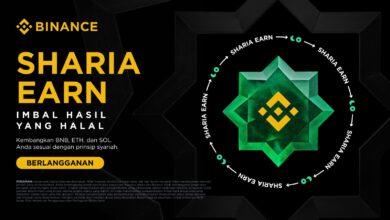An Introduction to the Axelar Network: Enabling Universal Web3 Interoperability

The Axelar Network is advancing the world of Web3 applications by providing secure cross-chain communication and interoperability. In a time when Web3 is still in its infancy, Axelar offers an effective solution for developers and users alike.
Presently, a rapidly growing need exists for cross-chain services that link these innovative ecosystems. While L1 blockchains offer robust security guarantees, the existing cross-chain infrastructure—typically one-to-one bridges that often function as multisigs among acquaintances—falls short in terms of security assurances.
This situation presents a significant scalability challenge: establishing bilateral bridges among N networks necessitates N² bridges. A comprehensive network is imperative, capable of facilitating routing, translation, and security on an any-to-any basis across interconnected blockchains.
In contrast, consider the current state of Web2. When utilizing platforms like Zoom, concerns such as participant count, buffering, and screen sharing come to mind, while the underlying networking intricacies remain abstract. With participants potentially spanning the globe, diverse networks collaborate to enable seamless communication.
Internet protocols like BGP link these networks to exchange data, while overlay networks like content delivery networks (CDNs) ensure the anticipated smooth user experiences. These protocols and service layers underpin the interoperability vital to the Web2 applications we rely on.
For Web3 applications to achieve the same level of scalability and seamlessness as their Web2 counterparts, the establishment of a Web3 overlay network offering universal routing, translation, and security is indispensable.
What is the Axelar Network?
The Axelar Network delivers a secure avenue for cross-chain communication within the Web3 realm. Its infrastructure empowers dApp users to seamlessly engage with any asset or application on any chain, all with a single click.
To put it succinctly, the Axelar network functions as a blockchain that establishes connections between blockchains, thus facilitating universal Web3 interoperability. This network is fortified through the proof-of-stake (PoS) consensus, and messages are navigated and translated via open protocols. By way of analogy, Axelar can be likened to the Stripe of the Web3 landscape.
Axelar comprises a decentralized network of validators, secure gateway contracts, standardized translation mechanisms, a routing architecture, and a suite encompassing software development kits (SDKs) and application programming interfaces (APIs).
This comprehensive setup fosters composability between blockchains, empowering developers to construct applications that align with their specific use cases while effortlessly accessing users, assets, and applications across diverse ecosystems. Instead of relying on one-to-one cross-chain bridges, developers can leverage a network architecture that promotes uniformity in codebase and governance structure.
The ultimate aim of Axelar is to construct the foundational framework for onboarding the next billion individuals to the Web3 domain. To fulfill this ambition, Axelar will:
- Facilitate seamless communication and integration for blockchain developers across different chains.
- Furnish dApp developers with the ability to seamlessly interact across chains.
- Enable users to effortlessly engage with applications spanning multiple ecosystems.
The Axelar SDKs also offer an extensive suite for crafting Web3 applications, ensuring developers possess the necessary tools for creation. Armed with these tools and APIs, developers can harness the potential of the Axelar network and its SDKs to develop dApps that can be smoothly deployed across the range of Axelar-connected ecosystems.
In essence, Axelar streamlines cross-chain interoperability into a straightforward set of API requests. This is pivotal for adoption, as the developer experience surrounding Web3 application deployment must mirror the ease enjoyed by Web2 developers today, where intricate networking and ecosystem-specific deployment concerns are largely abstracted.
To help understand the network structure, here is a detailed tech stack diagram.

How Does it Work?
The Axelar network has three key components across two functional layers:
A decentralized network
The first is the decentralized network itself, supported by a set of validators that are responsible for maintaining the network and executing transactions. The validators run the cross-chain gateway protocol, which is a multi-party cryptography overlay that sits on top of Layer 1 blockchains. Their responsibilities encompass executing both read and write operations on gateway smart contracts situated within interconnected external chains, as well as participating in voting and attestation processes for events occurring on those chains.
Gateways
The second component comprises gateways, which are intelligent contracts facilitating the linkage between the Axelar network and its interconnected Layer 1 blockchains. Validators oversee gateways, processing incoming transactions that they “read.”
Subsequently, these validators collectively determine the transaction’s legitimacy and “write” it onto the destination chain’s gateway, effectuating the cross-chain transaction. Together, validators and gateways form the fundamental building blocks of the infrastructure layer.
Developer tools
Sitting on top of the validators and gateways are the APIs and SDKs (the libraries and tools that enable developers to access the Axelar network easily). This is the application-development layer that developers use to compose across any two chains in a single hop, adding universal interoperability to their blockchains and applications.
With Axelar, they can lock, unlock and transfer assets between any two addresses on any two blockchain platforms, execute cross-chain application triggers, and more generally, handle any cross-chain requests.
How to Use Axelar?
The Axelar Network features four key points of interaction:
The initial point involves the aforementioned SDK, employed by developers to seamlessly integrate their Web3 applications.
The second point pertains to running a node or validator, actively engaging in the foundational processes that uphold network security and validate cross-chain transactions. Documentation on setting up validators is accessible here.
The third aspect involves leading or aiding the integration of a new blockchain into the Axelar Network. Each new blockchain integrated exponentially augments the potential value that Axelar can deliver to both developers and end-users. Presently, adding new blockchains is not openly available as a feature for Axelar network users. Nonetheless, the testnet demo illustrates the straightforwardness and developer-friendly nature of the process, achievable in under 10 minutes.
The fourth dimension encompasses the utilization of Axelar’s newly launched decentralized cross-chain asset transfer application, Satellite. As of the current writing, Satellite supports the seamless transfer of native Terra assets like Luna and UST between a range of Ethereum Virtual Machine (EVM) and non-EVM blockchains including Avalanche, Ethereum, Fantom, Moonbeam, Polygon, and Terra.
Future weeks and months will witness the gradual expansion of support for additional networks and assets. Satellite effectively showcases the potential seamlessness for end-users: asset exchange between previously isolated ecosystems, without necessitating any changes to the user interface.

A Look into the Future
Over the past two decades, we’ve witnessed the internet’s transformation into its current form, where Web2 applications excel in seamless scalability and user experience. However, a new chapter is beginning.
Web3 is still in its infancy, and it’s of utmost importance that developers have the freedom to explore innovative programming languages, blockchain architectures, and consensus mechanisms while retaining access to users and liquidity. Initially, Axelar was a bet on a future with multiple chains. Today, that bet has been validated, and the era of multiple chains is upon us.
Yet, ensuring the secure scalability of a multichain ecosystem to accommodate millions of users engaging in billion-dollar transactions is a complex undertaking that demands a meticulously designed architecture. Existing pairwise solutions are inadequate for this task.
Just as Akamai and CDNs revolutionized possibilities in Web2, Axelar’s universal overlay network is poised to create more opportunities in Web3. It will establish secure and interoperable connections between all blockchain ecosystems, akin to how Web2 developers effortlessly deploy web applications for users across various networks. Axelar’s APIs will similarly empower Web3 developers to deploy applications across any L1 blockchain seamlessly, without the need to navigate the specifics of each one.
Addressing concerns about cross-chain connectivity jeopardizing the security of L1 blockchains, Axelar emerges as a solution. It stands as the universal, decentralized transport layer, bolstered by permissionless validators and driven by Tendermint technology. Axelar liberates cross-chain applications from the insecurity of ad-hoc bridges. Serving as a universal overlay network, it orchestrates routing, translation, and security among all blockchains, fostering Web3 interoperability with the utmost composability and security.
To learn more about the Axelar SDK, kindly take a look at the developer documentation and join Discord.





